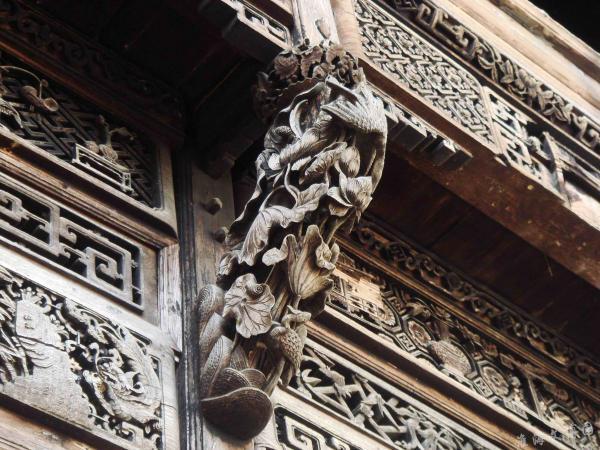Woodcarvings tell story of evolving values

A typicial traditional folk art in China, delicate woodcarvings reflect Chinese people’s hopes for happiness.
As a material bursting with vitality, wood possesses gentle, natural and plain features. In primitive society, early Chinese used local materials to individualize woodcarvings. They unlocked the aesthetic potential of wood, completely harnessing its beauty with their folk knowledge and crafts manship to create large amounts of woodcarvings.
Over the centuries, their creations developed and ultimately formed a tradition of woodcarving in China. The art of Chinese woodcarving has a long history and it is characterized by precise shapes as well as distinct, lively lines and a skilled and fluent cutting technique.
For thousands of years, Chinese people have had a deeply rooted view of the traditional family, believing that to have many children and grandchildren brings happiness. So in Huizhou, Anhui Province, when couples get married, a family usually chooses wooden dressers and beds with delicate carvings as wedding gifts.
Woodcarvings with designs of dragons and phoenixes are very popular for newly married couples because these images are said to bring good fortune and stand for an eternal love. Wood furniture with a pomegranate pattern symbolizes that a couple will have many children, and the design of a mandarin duck represents marital bliss.
In the traditional monarchical society, the ultimate virtue that officials aspired to was loyalty to their emperor. The ideas of filial piety, honesty and loyalty have constantly evolved, gradually forming into an ethical system. These principles affected the design of woodcarvings.
For instance, in Huizhou, many woodcarvings are engraved with pictures of many traditional Chinese stories about ethical principles, such as “Oath of the Peach Garden,” “Su Wu the Lonely Shepherd,” “A Hero and a Boy” and “The Tattoo on Yue Fei’s Back.”
Another function of ancient woodcarvings is to express feudal scholars’ wishes for their official career. Rooted in Confucian thought, the ideal life for scholars who excel in study is to follow an official career.
Thus, designs dealing with studying for and passing an imperial examination become a traditional theme in woodcarving and demonstrate Chinese people’s hopes for a better life.
As a gem in the crown of Chinese art, woodcarving is one of the most typical traditional folk art forms in China. Displaying a range of themes and designs, the art of woodcarving shows how Chinese thought and culture has changed as well as what has been passed down from generation to generation.
Revised by Justin Ward
